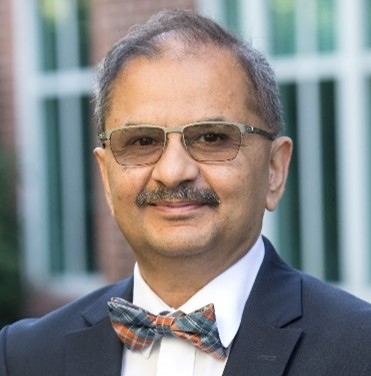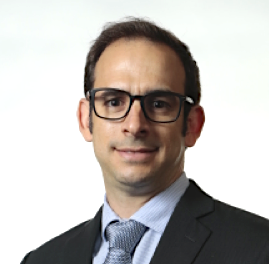Module 3 - Identifying Strategies to Increase CGM Use
Launch Date:
May 11, 2022
May 11, 2022
Primary Audience:
Healthcare professionals who treat patients with diabetes, including endocrinologists, internists, primary care physicians, pediatricians, obstetricians, and advanced practice providers
Relevant Terms:
Type 1 diabetes, type 2 diabetes, CGM, A1C, AGP report, time in range, barriers, hypoglycemia, hyperglycemia
This module describes various barriers to the use of CGM, as well as strategies to overcome those barriers. Multiple patient cases are presented to illustrate practical points.
Ananda Basu, MD, FRCP
Harrison Professor of Medicine
Clinician-Investigator
Division of Endocrinology
Center for Diabetes Technology
Director, Diabetes Technology Program
University of Virginia, Charlottesville, VA
 Dr. Ananda Basu, MBBS, MD, FRCP, is a Harrison Distinguished Professor of Medicine at the University of Virginia School of Medicine. His area of interest is integrated carbohydrate physiology and hormonal regulation of carbohydrate metabolism in type 1 and type 2 diabetes. He has worked in this field at Mayo Clinic, Rochester, MN since 1993 and continues to do so at the University of Virginia since he moved in 2017. In the last 25 years of independent federal funding, he has helped develop and applied state of the art research tools involving innovative isotope dilution methods to enhance our understanding of carbohydrate physiology in type 1 diabetes with the ultimate goal to inform, refine and help develop the next generation of artificial endocrine pancreas (AP) that re-creates, to the extent possible a truly artificial islet The triple tracer method that he helped develop, is currently the gold standard for in vivo assessment of postprandial carbohydrate turnover and β cell functions and forms the underpinnings of the FDA endorsed Type 1 diabetes simulator. Glucagon kinetics, α cell physiology and intra-islet network (β-α cell interplay) is insufficiently investigated in humans, especially in those with type 1 diabetes. In order to refine the next generation multi-hormonal closed loop control algorithms to restore normal insulin-glucagon hormonal milieu he has developed an innovative isotope dilution technique using stable-labeled glucagon isotope to measure parameters of glucagon kinetics in humans directly and in vivo.
Dr. Ananda Basu, MBBS, MD, FRCP, is a Harrison Distinguished Professor of Medicine at the University of Virginia School of Medicine. His area of interest is integrated carbohydrate physiology and hormonal regulation of carbohydrate metabolism in type 1 and type 2 diabetes. He has worked in this field at Mayo Clinic, Rochester, MN since 1993 and continues to do so at the University of Virginia since he moved in 2017. In the last 25 years of independent federal funding, he has helped develop and applied state of the art research tools involving innovative isotope dilution methods to enhance our understanding of carbohydrate physiology in type 1 diabetes with the ultimate goal to inform, refine and help develop the next generation of artificial endocrine pancreas (AP) that re-creates, to the extent possible a truly artificial islet The triple tracer method that he helped develop, is currently the gold standard for in vivo assessment of postprandial carbohydrate turnover and β cell functions and forms the underpinnings of the FDA endorsed Type 1 diabetes simulator. Glucagon kinetics, α cell physiology and intra-islet network (β-α cell interplay) is insufficiently investigated in humans, especially in those with type 1 diabetes. In order to refine the next generation multi-hormonal closed loop control algorithms to restore normal insulin-glucagon hormonal milieu he has developed an innovative isotope dilution technique using stable-labeled glucagon isotope to measure parameters of glucagon kinetics in humans directly and in vivo.He is particularly interested in the translational aspects of implementing diabetes technology in the outpatient clinic and is the Founder-Director of the Diabetes Technology Clinic at UVA that follows close to 1000 patients with Type 1 diabetes in the community. Dr. Basu attended medical school in India, trained in endocrinology in the UK before completing residency and fellowship training in Endocrinology at Mayo Clinic in Rochester, MN and joined the faculty there in 2000, before his move to UVA in 2017.
Rodolfo J. Galindo, MD, FACE
Associate Professor of Medicine
Investigator, Center for Diabetes & Metabolism Research
Emory University Hospital Midtown
Medical Chair, Hospital Diabetes Taskforce
Emory Healthcare System
 Dr. Rodolfo J. Galindo graduated with Summa Cum Laude from the Institute of Medical Sciences of the University of Havana, Cuba. He completed his Internal Medicine and Endocrinology fellowship at the Albert Einstein College of Medicine and North Shore University Hospital, in New York. After graduating from his fellowship, he joined the faculty of the Mount Sinai School of Medicine and served as the Director of the Hospital Diabetes. Dr. Galindo joined the faculty of Emory University in 2017, as a clinical researcher on diabetes and obesity.
Dr. Rodolfo J. Galindo graduated with Summa Cum Laude from the Institute of Medical Sciences of the University of Havana, Cuba. He completed his Internal Medicine and Endocrinology fellowship at the Albert Einstein College of Medicine and North Shore University Hospital, in New York. After graduating from his fellowship, he joined the faculty of the Mount Sinai School of Medicine and served as the Director of the Hospital Diabetes. Dr. Galindo joined the faculty of Emory University in 2017, as a clinical researcher on diabetes and obesity.Dr. Galindo’s areas of clinical and research interest include management of diabetes with complications, including those with obesity, with advanced renal failure, and in hospitalized patients. He is interested in using diabetes technology and has several ongoing research projects on the use of CGM technology in these populations. His clinical research program is currently funded by the NIH- NIDDK, NIDDK-sponsored Georgia Center for Diabetes Translational Research, foundations and investigator-initiated studies.
1.
Explore strategies to overcome clinician/patient barriers and, through multiprofessional small group interactions, improve adoption of CGM devices in community practices
